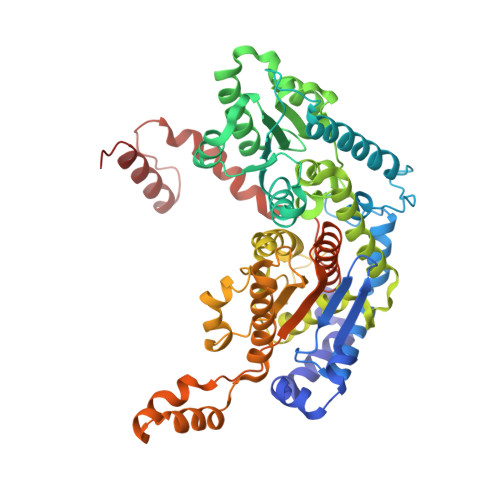Conformational Changes in Phosphoglucose Isomerase Induced by Ligand Binding
Arsenieva, D.A., Jeffery, C.J.(2002) J Mol Biology 323: 77-84
- PubMed: 12368100
- DOI: https://doi.org/10.1016/s0022-2836(02)00892-6
- Primary Citation of Related Structures:
1HM5 - PubMed Abstract:
Phosphoglucose isomerase (PGI; EC 5.3.1.9) is the second enzyme in glycolysis, where it catalyzes the isomerization of D-glucose-6-phosphate to D-fructose-6-phosphate. It is the same protein as autocrine motility factor, differentiation and maturation mediator, and neuroleukin. Here, we report a new X-ray crystal structure of rabbit PGI (rPGI) without ligands bound in its active site. The structure was solved at 1.8A resolution by isomorphous phasing with a previously solved X-ray crystal structure of the rPGI dimer containing 6-phosphogluconate in its active site. Comparison of the new structure to previously reported structures enables identification of conformational changes that occur during binding of substrate or inhibitor molecules. Ligand binding causes an induced fit of regions containing amino acid residues 209-215, 245-259 and 385-389. This conformational change differs from the change previously reported to occur between the ring-opening and isomerization steps, in which the helix containing residues 513-521 moves toward the bound substrate. Differences between the liganded and unliganded structures are limited to the region within and close to the active-site pocket.
- Laboratory for Molecular Biology, MC567, Department of Biological Sciences, University of Illinois, Chicago, IL 60607, USA.
Organizational Affiliation:
















